Built 1932 Opened 1932 | NRHP Reference # 13000283 Added to NRHP 27 February 2013 | |
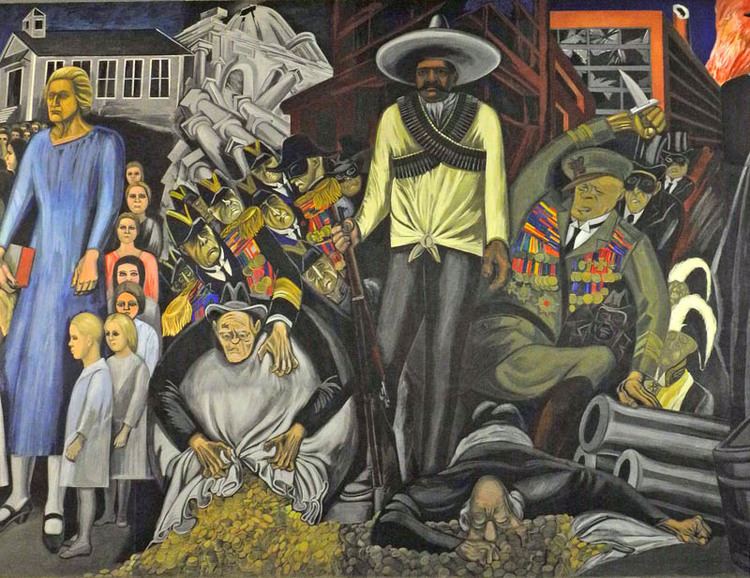 | ||
Similar Hood Museum of Art, Red Rolfe Field at Biondi Park, Dartmouth College: Webster, Shattuck Observatory, Alumni Gymnasium | ||
Dartmouth s orozco mural the epic of american civilization
The Epic of American Civilization is a mural by the social realist painter José Clemente Orozco. It is located in the basement reading room of the Baker Memorial Library on the campus of Dartmouth College in Hanover, New Hampshire. The mural, painted between 1932 and 1934, consists of a series of 24 fresco panels, whose principal themes are the impact of both indigenous Native Americans and European colonists on North America, and the impact of war (particularly the Mexican Civil War and the First World War) and rapid industrialization on the human spirit. The mural was designated a National Historic Landmark in 2013.
Contents
- Dartmouth s orozco mural the epic of american civilization
- The epic of american civilization a freile
- The Coming and Departure of Quetzalcoatl
- Cortez and the Modern Era
- References
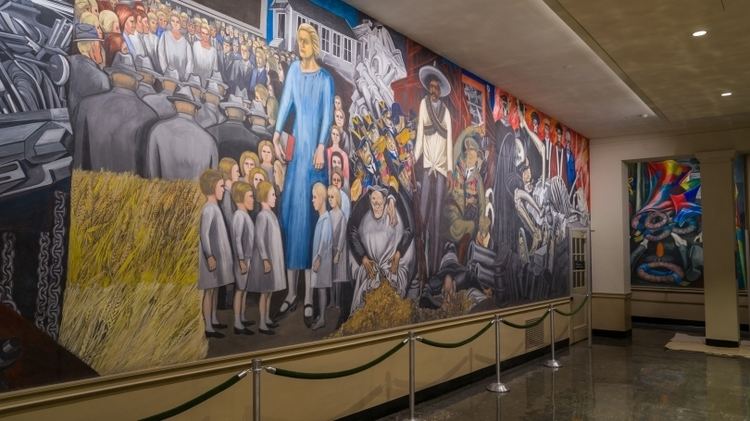
The epic of american civilization a freile
The Coming and Departure of Quetzalcoatl
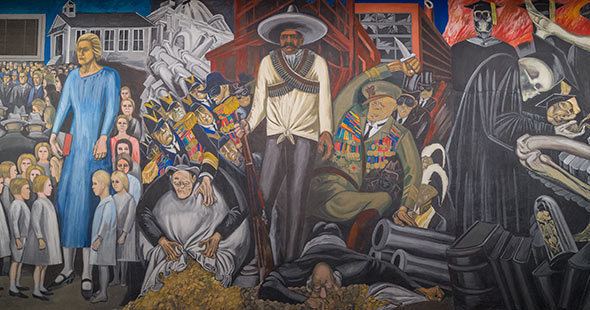
The two themes of the mural are arranged in separate wings of the reading room. The west wing contains ten panels on the first theme, that of Native Americans.
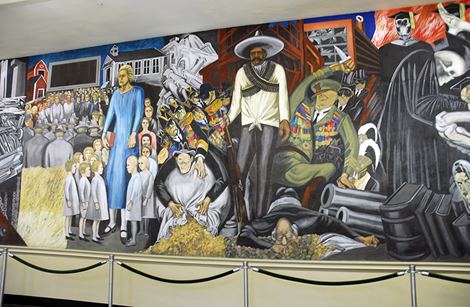
This panel is located on the short western wall, to the left of the doors. It depicts the arrival of natives as a grim march, echoing the industrially-oriented panel at the far eastern end of the room.
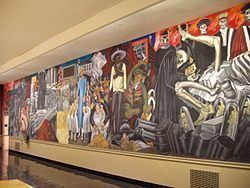
Located over the western doors, this panel shows a rattlesnake flanked by spears. Its color palette suggests it was painted when Orozco worked on the eastern panels.
This panel, to the right of the western doors, depicts human sacrifice as practiced by ancient Mesoamericans, in which the living heart is removed from the sacrificial victim. The panel has an analog (as the first one does) on the opposite wall of the east wing.
This and the next four panels are on the north wall of the west wing. This one depicts Aztec warriors wearing eagle and jaguar costumes, and includes a representation of the head of the plumed serpent god Quetzalcoatl.
Quetzalcoatl is presented as a benevolent god in human form. He is shown granting the benefits of education and culture on his people, and driving off older gods.
The benefits of agriculture, arts, and science brought by Quetzalcoatl bring a golden age. A man works crops, another creates a stone stele, and a third studies the stars.
Adherents of the banished gods band together to drive Quetzalcoatl away. Sorcerers massed in front of a pyramidal temple oppose the departing god.
This small panel, located above a door, depicts Spanish conquistadors on horseback wielding a giant Christian cross as a weapon.
This pair of vertical panels are applied to poles in the western half of the room. They are caricatures of totem poles found in the Pacific Northwest.
Cortez and the Modern Era
These vertical panels depict modern industrial themes in a manner similar to a totem pole. They are applied to poles in the eastern half of the room.
This panel and the next four are located on the south wall of the eastern half of the room. Orozco depicts Hernán Cortés as a brutal anti-hero leading the 16th century Spanish conquest of the Aztec Empire, fulfilling the prophecy of Quetzalcoatl. Cortés stands surrounded by images of destruction, accompanied by a cross-bearing Franciscan monk.
This panel marks the transition to the 20th century, depicting a mass of machinery with no discernible function.
Orozco presents a visually mixed assessment of North American society. A schoolhouse and town meeting are shown, but an overbearing schoolteacher dominates the scene, and the town meeting is presented with rigidity.
A modern Mexican rebel, resembling Emilio Zapata, dominates a caricature of rich and militaristic society.
This panel savages the institutional church's indifference to the social upheavals of the 1930s, with flames reminisicent of the scenes from this section's first panel.
This small panel is located above a door on the north wall of the east side. It depicts a junk pile of historical symbols of warfare and empire.
An analog to the "Ancient Human Sacrifice" panel on the west side, this panel shows the body of a soldier, wrapped in the trappings of patriotism, symbolizing the pointless sacrifice of the individual for the institution. This panel is to the left of the easternmost doors.
A depiction of Jesus, sweeps away old religious and political ideologies, discarding symbols of religion, culture, and the military. This panel is to the right of the easternmost doors.
This panel, located over doors on the south side of the eastern half, shows vultures wearing clerical collars. They hold keys to chains of bondage piled below them.
This is a series of five panels, centrally located by the reserve reading desk. It presents Orozco's vision for a possible new world (after the actions of Jesus in the "Modern Migration of the Spirit" panel) in which workers are free to benefit from their own labor, and the different cultures are able to coexist harmoniously.
